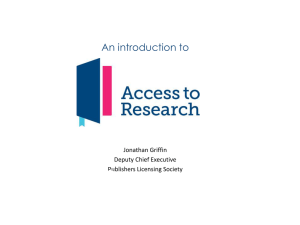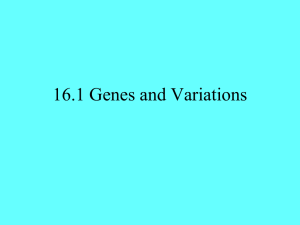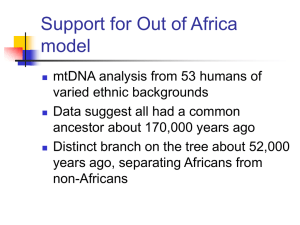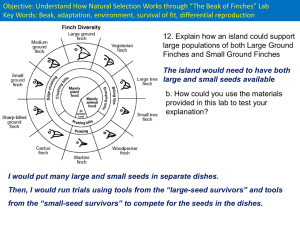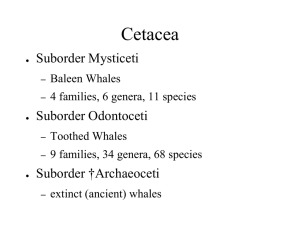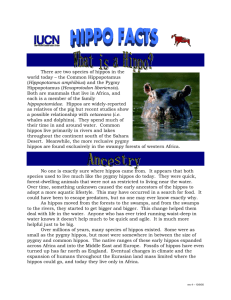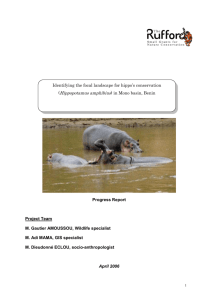EVOLUTION HW AP BIOLOGY DR WEINER Multiple Choice (2 pts
advertisement
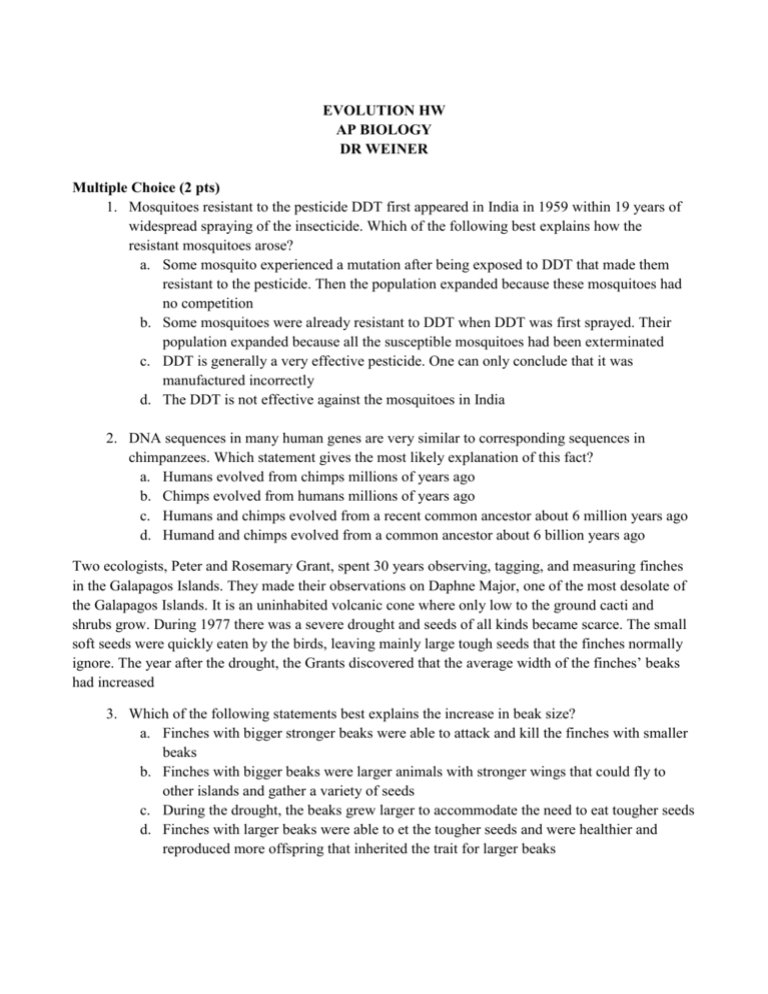
EVOLUTION HW AP BIOLOGY DR WEINER Multiple Choice (2 pts) 1. Mosquitoes resistant to the pesticide DDT first appeared in India in 1959 within 19 years of widespread spraying of the insecticide. Which of the following best explains how the resistant mosquitoes arose? a. Some mosquito experienced a mutation after being exposed to DDT that made them resistant to the pesticide. Then the population expanded because these mosquitoes had no competition b. Some mosquitoes were already resistant to DDT when DDT was first sprayed. Their population expanded because all the susceptible mosquitoes had been exterminated c. DDT is generally a very effective pesticide. One can only conclude that it was manufactured incorrectly d. The DDT is not effective against the mosquitoes in India 2. DNA sequences in many human genes are very similar to corresponding sequences in chimpanzees. Which statement gives the most likely explanation of this fact? a. Humans evolved from chimps millions of years ago b. Chimps evolved from humans millions of years ago c. Humans and chimps evolved from a recent common ancestor about 6 million years ago d. Humand and chimps evolved from a common ancestor about 6 billion years ago Two ecologists, Peter and Rosemary Grant, spent 30 years observing, tagging, and measuring finches in the Galapagos Islands. They made their observations on Daphne Major, one of the most desolate of the Galapagos Islands. It is an uninhabited volcanic cone where only low to the ground cacti and shrubs grow. During 1977 there was a severe drought and seeds of all kinds became scarce. The small soft seeds were quickly eaten by the birds, leaving mainly large tough seeds that the finches normally ignore. The year after the drought, the Grants discovered that the average width of the finches’ beaks had increased 3. Which of the following statements best explains the increase in beak size? a. Finches with bigger stronger beaks were able to attack and kill the finches with smaller beaks b. Finches with bigger beaks were larger animals with stronger wings that could fly to other islands and gather a variety of seeds c. During the drought, the beaks grew larger to accommodate the need to eat tougher seeds d. Finches with larger beaks were able to et the tougher seeds and were healthier and reproduced more offspring that inherited the trait for larger beaks 4. Which of the following statements explains the mechanism behind the change in beak size? a. A new allele appeared in the finch population as a result of a mutation b. A change in the frequency of a gene was due to selective pressure from the environment c. A new trait appeared in the population because of recombination of alleles d. A new trait appeared in the population because of genetic drift 5. On Andros Island in the Bahamas, populations of mosquito fish colonized a series of ponds. These ponds are no longer connected. However, the environments are very similar except that some ponds contain predatory fish, while others do not. In high predation ponds selection has favored the evolution of a body shape that enables rapid bursts of speed. In low predation ponds a body plan that is well equipped for swim for long periods of time is favored. When scientists brought together sample mosquito fish from the two types of ponds they found that the females mated only with the males that had the same body type as their own. Which of the following statements best describes what happened to the mosquito fish as evidenced by the mating choice in the female fish? a. Reproductive isolation caused geographic isolation b. Reproductive isolation was not complete c. Allopatric isolation brought about reproductive isolation d. Sympatric isolation brought about reproductive isolation 6. From 1972 to 2004, researchers studying the greater prairie chicken observed that a population collapse mirrored a reduction in fertility as measured by the haching rate of eggs. Comparison of DNA samples from the Jasper County, Illinois population with DNA from feathers in a museum collection showed that genetic variation declined in the studied population. The researchers translocated prairie chikens from Minnesota, Kansas, and Nebraska into the Illinois prairie chicken population in 1992 and found that the hatching rate in Illinois prairie chicken changed. Here is a graph of the data. hatching rate % 200 hatching rate 100 0 1960 1970 1980 1990 2000 2010 Which of the following statements most accurately explains what happened to the studied population of prairie chickens after translocation and why? a. The hatching rate increased because genetic variation declined b. The hatching rate increased because genetic variation increased c. The hatching rate decreased because genetic variation decreased d. The hatching rate increased because the translocated animals were invasive and grew to dominate the population 7. A marsupial living in Australia has evolved to eat tree leaves, be diurnal, and raise its young until they are of reproductive age. A grazing placental mammal has also evolved the same characteristics. This is an example of which type of evolution? a. Divergent evolution b. Species-specific evolution c. Convergent evolution d. Directional selection 8. In a population of squirrels, the allele that causes bushy tail (B) is dominant, while the allele that causes bald tail (b) is recessive. If 64% of the squirrels have bushy tail, what is the frequency of the dominant allele? a. 0.8 b. 0.6 c. 0.4 d. 0.2 9. Mothers and teachers have often said they need another pair of eyes on the backs of their heeds. And another pair of hands would also come in handy. These traits would have been advantageous to ancestral humans too. According to sound evolutionary reasoning, what is the most likely explanation for why humans don’t have these traits? a. Because they would actually not have been beneficial to those who had them. Natural selection always produces the most beneficial traits for a particular organism in a particular environment. b. Because every time they have arisen, the individual mutants bearing these traits have been killed by chance events. Chance and natural selection interact c. Because these variations probably never appeared in a healthy human. As a tetrapod, we are pretty much stuck with the four-limb two eyed body plan. Natural selection can only act on exiting traits. d. Because humans are a relatively young species. If we stick around and adapt for long enough, it is inevitable that the required adaptations will arise 10. A migrating flock of Canadian geese is nearly decimated by a severe storm. Only four members of the flock, which constitutes the entire population of a specific region, survive and return north the next spring. These four start a new colony. This phenomenon is known as a. Gene flow b. Natural selection c. Genetic drift d. Directional selection 11. Based on the tree, which of the following statements is NOT true? a. The lineage leading to salamanders was the first to diverge from the others b. Salamanders are as closely related to goats as to humans c. Lizards are more closely related to salamanders than to humans d. The boxed group is paraphyletic salamander lizard goat human 12. A migrating flock of Canadian geese is nearly decimated by a severe storm. Only four members of the flock, which constitutes the entire population of a specific region, survive and return north the next spring. These four start a new colony. This phenomenon is known as a. Gene flow b. Natural selection c. Genetic drift d. Directional selection 13. When a population is split in two populations separated by a geographical barrier that makes interbreeding impossible, this could eventually lead to a. Sympatric speciation b. Allopatric speciation c. Adaptive radiation d. polyploidy 14. the rise of methicillin-resistant Satphylococcus aureus (MRSA) can be considered to be an example of artificial selection because a. humans purposely raise MRSA in large fermenters in an attempr to make the bacteria even more resistant b. S. aureus in cultivated by humans to replenish the soil with nutrients c. Humans synthesize methicillin and create environments in which bacteria frequently come into contact with methicillin d. Humans are becoming resistant to bacteria by taking methicillin 15. In a hypothetical environment, fishes called pike-cichlid’s are visual predators of algae-eating fish (they locate their prey by site). If a population of algae-eaters experiences predation pressure from pike-cichlids, which of the following is least likely to be observed in the algaeeater population over the course of many generations? a. Selection for drag coloration of the algae-eaters b. Selection for nocturnal algae-eaters c. Selection for larger female algae-eaters bearing broods of composed of more, and larger young d. Selection for algae-eaters that become sexually mature at smaller overall body sizes 16. If the bacterium Staphylococcus aureus experiences a cost for maintaining one or more antibiotic resistant genes, then what should happen in environments from which antibiotics are missing? a. These genes should continue to be maintained in case the antibiotics ever appear b. These bacteria should be outcompeted and replaced by bacteria that have lost these genes c. The bacteria should try to make the cost worthwhile by locating and migrating to environment where traces of antibiotics are present d. The bacteria should start making and screening their own antibiotics 17. Which of the following pieces of evidence most strongly supports the common origin of all life on Earth? a. All organisms require energy b. All organisms use essentially the same genetic code c. All organisms reproduce d. All organisms have undergone evolution The following questions refer to the figure which shows an outcrop of sedimentary rock whose strata are labeled A-D. surface A x B C D 18. If x indicates the location of fossils of two closely related species, then fossils of their most recent common ancestor are most likely to occur in which stratum? a. A b. B c. C d. D 19. If x indicates the fossils of two closely related species neither of which is extinct, then their remains may be found in how many of these strata? a. One b. Two c. Three d. Four About thirteen different species of finches inhabit the Galapagos Islands today, all descendants of a common ancestor from the South American mainland that arrived a few million years ago.Geneticaly, there are four distinct lineages but the thirteen species are currently classified among three genera. The first lineage to diverge from the ancestral lineage was the warbler finch (genus Certhidea). Next to diverge was the vegetarian finch (genus Camarhynchus), followed by five tree finch species (also in genus Camarhynchus), and six ground finch species (genus Geospiza). 20. If the six ground finch species have evolved most recently, then which of these is the most logical prediction? a. They should be limited to the six islands that most recently emerged from the sea b. Their genomes should be more similar to each other than are the genomes of the five tree finch species c. They should share fewer anatomical homologies with each other than they share with the tree finches d. The chances of hybridization between two ground finches should be less than the chances of hybridization between two tree finch species 21. According to a 1999 study, the vegetarian finch is genetically no more similar to the tree finches than it is to the ground finches, despite the fact that it is placed in the same genus as the tree finches. Based on this finding, it is reasonable to conclude that the vegetarian finch a. Is no more closely related to the tree finches than it is to the ground fzinches, despite its classification b. Should be reclassified as a warbler finch c. Is not truly a descendant of the original ancestral finch d. Is a hybrid species, resulting from a cross between a gyround finch and a tree finch 22. Currently, two extant elephant species (X and Y) are placed in the genus Loxodonta and a third species (Z) is placed in the genus Elephas. Assuming this classification reflects evolutionary relatedness, which of the following is the most accurate phylogenetic tree? x a. y z z b. y x z c. x y x d. z y 23. In the wild, male house finches (Carpodus mexicanus) vary considerably in the amount of red pigmentation in the head and throat feathers, with colors ranging from pale yellow to bright red. These colors come from the carotenoid pigments that are found in the birds’ diet; n other vertebrates are known to synthesize carotenoid pigment. Thus, the brighter the red the males’ feathers are, the more successful he has been at acquiring the pigmeny tin his food-gathering efforts (all other factors being equal). During breeding season, one should expect female house finches to prefer to mate with males with the brightest red feathers. Which of the following is true of this situation? a. Alleles that promote more efficient acquisition of carotenoid-containing foods by males should increase over the course of generations b. Alleles that promote more effective deposition of carotenoid pigments in the feathers of males should increase over the course of generations c. There should be directional selection for bright red feathers in males d. All three are true You are studying three populations of birds. Population A has ten birds, one of which is brown (a recessive trait) and nine are red. Population B has 100 birds, of which 10 are brown. Population C has 30 birds and 3 of them are brown. 24. In which population would it be least likely that an accident would significantly alter the frequency of the brown allele? a. Population A b. Population B c. Population C d. It is impossible to tell from the information given 25. Which population is most likely to be subject to the bottleneck effect? a. Population A b. Population B c. Population C d. It is impossible to tell from the information given On the volcanic equatorial West African island of Sau Tome, to species of fruit fly exist.Drosophila yakuba inhabits the island’s lowlands and is also found on the African mainland located about 200 miles away. At higher elevations, and only on Sau Tome is found the very closely related Drosophila santomea. The two species can hybridize though male hybrids are sterile. A hybrid zone exists at middle elevations, though hybrids there are greatly outnumbered by D. santomea. Studies of the two species’ nuclear genomes reveals that D. yakuba on the island is more closely related to mainland D. yakuba than to D. santomea. Sao Tome arose from the Atlantic Ocean about 14 million years ago. 26. Which of the following reduces gene flow between the gene pools of the two species on Sao Tome, despite the existence of hybrids? a. Hybrid sterility b. Hybrid breakdown c. Geographic barriers d. Hybrid inviability 27. Which of these evolutionary trees represents the evolutionary relationships among D. santomea, D. yakuba (Island) , and D. yakuba (mainland Yakuba (M) a. Yakuba (I) santomea b. santomea Yakuba (I) Yakuba (M) c. Yakuba (I) santomea Yakuba (M) d. Yakuba (I) santomea Yakuba (M) Traditionally, whales and hippos have been classified in different orders, the Cetacea and the Artiodactyla, respectively. Reent molecular evidence, however, indicates that the whales’ closest living relatie s are the hippos. This has caused some zoologists to lump the two orders together into a single clade, the Cetatiodactyla. There is no consensus on whether the Cetartiodactyla should be accorded order status or superorder status. This is because it remains unclear whether the whale lineage diverged from the lineage leading to the hippos before or after other members of the order Artiodactyla (pigs, camels, etc) diverged. The following trees compare the “within the artiodactyls origin of the whale lineage with the without the artiodactyls” origin of the whale lineage whales whales hippos hippos pigs pigs Other artiodactyls Other artiodactyls 28. Placing whales and hippos in the same clade means a. That these organisms are phenotypically more similar to each other than to any others shown on the above trees b. That their morphological similarities are probably homoplasies c. That they share a common ancestor d. None of the above can be determined from the trees 29. It turns out that the whale lineage diverged from the lineage leading to hippos after the divergence of the lineage leading to the pigs and other artiodactyls , and if the whales continue to be classified in the order Cetacea, then which of the following becomes true? a. It becomes monophyletic b. It becomes paraphyletic c. It becomes polyphyletic d. It becomes part of the order Cetacea 30. What can be properly inferred from the trees? a. In the “without” tree pigs are more distantly related to hippos than is depicted in the “within” tree b. In the “without” tree, pigs are more closely related to hippos than to whales c. In the “within” tree pigs are more closely related to whales than they are to hippos d. In the “within” tree all artiodactyls, including hippos, are more closely related to each other than any are to whales Hardy-Weinberg Problems (5 pts each) You must show all work to receive any credit for these problems. 1. In Drosophila, the allele for normal length wings is dominant over the allele for vestigial wings. In a population of 1,000 individuals, 360 show the recessive phenotype. How many individuals would you expect to be homozygous dominant and heterozygous for this trait? 2. The allele for the ability to roll one's tongue is dominant over the allele for the lack of this ability. In a population of 500 individuals, 25% show the recessive phenotype. How many individuals would you expect to be homozygous dominant and heterozygous for this trait? 3. The allele for the hair pattern called "widow's peak" is dominant over the allele for no "widow's peak." In a population of 1,000 individuals, 510 show the dominant phenotype. How many individuals would you expect of each of the possible three genotypes for this trait? 4. In the United States, 16% of the population is Rh (r) negative. The allele for Rh negative is recessive to the allele for Rh (R) positive. In a population of 2000, approximately how many individuals would be RR, Rr, rr. 5. In a population 90% of the population is dominant for a particular trait. What is the frequency of the dominant allele? Short Answer .1. Identify a (10 pt) Clade Monophyletic group Paraphyletic group Polyphyletic group 2. What is homology and homoplasy? How can they be used to create phylogenetic trees? Define parsimony and how it is used to create phylogenetic trees (5 pt)


